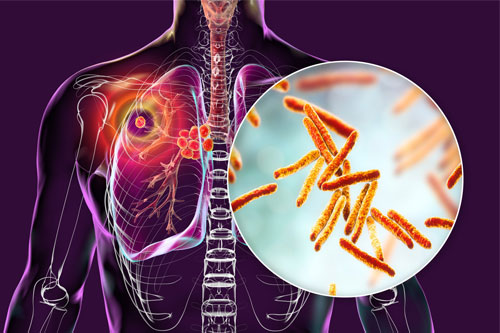
Tuberculosis (TB) remains one of the most prevalent infectious diseases in the world and continues to be a major cause of morbidity and mortality, especially in countries like India. Despite significant advances in medicine and healthcare, TB continues to present serious health threats globally.
In this article, we will explore the basics of tuberculosis, its symptoms, how it spreads, diagnostic methods, and treatment options.
Tuberculosis (TB) is an infectious disease caused by Mycobacterium tuberculosis, a type of bacteria. It primarily affects the lungs but can spread to other organs, including the lymph nodes, bones, kidneys, eyes, and genitourinary tracts. TB is highly contagious and requires early diagnosis and long-term treatment for complete recovery.
When the lungs are involved, it is called Pulmonary Tuberculosis (PTB). Pulmonary TB is contagious and spreads primarily through airborne droplets when an infected person coughs, sneezes, or talks. On the other hand, when other organs are affected, the condition is referred to as Extrapulmonary Tuberculosis (EPTB). This form of TB is generally less contagious than pulmonary TB but still requires timely treatment.
The symptoms of tuberculosis depend on whether the infection is latent or active. Active TB typically manifests with the following symptoms:
These symptoms should not be ignored, as they could be signs of active TB, especially if they persist for a long time.
TB is primarily spread through airborne droplets. When an infected person coughs, sneezes, or even speaks, tiny droplets containing the TB bacteria are released into the air. These bacteria can be inhaled by others nearby, leading to possible infection.
However, not everyone who inhales these bacteria will develop TB. The risk of contracting TB depends on several factors:
TB is most commonly seen in people with compromised immune systems, so early detection and treatment are critical in preventing further spread.
Early and accurate diagnosis is key to effective TB treatment. Below are the primary diagnostic methods used to identify TB:
A chest X-ray is often the first diagnostic tool used when TB is suspected, particularly for pulmonary TB. It can show:
While a chest X-ray is helpful for identifying possible TB, it is not conclusive. Further tests, like sputum tests, are necessary to confirm the presence of Mycobacterium tuberculosis.
Sputum smear microscopy is a commonly used method for diagnosing active pulmonary TB. It involves:
The Gene Xpert test is a nucleic acid amplification test (NAAT). It is a fast, cartridge-based test that can diagnose pulmonary and extrapulmonary TB. The key features of Gene Xpert include:
A sputum culture involves growing the bacteria from a sputum sample in a special culture medium to confirm the diagnosis. This test is more sensitive than smear microscopy but takes much longer (usually 6 weeks) to produce results.
TB is treatable, but the treatment duration depends on whether the TB is drug-sensitive or drug-resistant.
For drug-susceptible pulmonary TB, the standard regimen consists of a 6-month course divided into two phases:
This regimen is typically delivered through fixed-dose combinations to enhance adherence and treatment outcomes.
For multidrug-resistant TB (MDR-TB) and extensively drug-resistant TB (XDR-TB), NTEP recommends individualized treatment regimens based on drug susceptibility testing results. The 2022 update introduced a 6-month regimen known as BPaLM, comprising bedaquiline (Bdq), pretomanid (Pa), linezolid (Lzd), and moxifloxacin (Mfx). This regimen is prioritized for eligible patients due to its shorter duration and improved efficacy.
Additionally, longer oral regimens lasting 18–20 months, including drugs like bedaquiline, linezolid, and clofazimine, are recommended for patients with specific resistance patterns.
The treatment for MDR-TB can be more expensive and less effective, requiring careful monitoring and support.
Tuberculosis remains a significant global health challenge, especially in countries like India, where it continues to impact millions of people. Early diagnosis, appropriate treatment, and preventive measures are key to controlling the spread of this infectious disease.
With the advancement of diagnostic tools like Gene Xpert and the availability of effective treatments, TB can be managed and cured, but it requires a sustained global effort. Understanding the symptoms, how TB spreads, and the importance of seeking medical care can help reduce the burden of TB and save lives.
Author,
MBBS, DTCD, DNB Pulmonary Medicine, EDRM (UK)
Fellowship in Pulmonary Critical Care, Fellowship in Sleep Medicine
Consultant Pulmonologist, Gurunanak Hospital, Bandra
© Guru Nanak Hospital & Research Centre. All Rights Reserved.